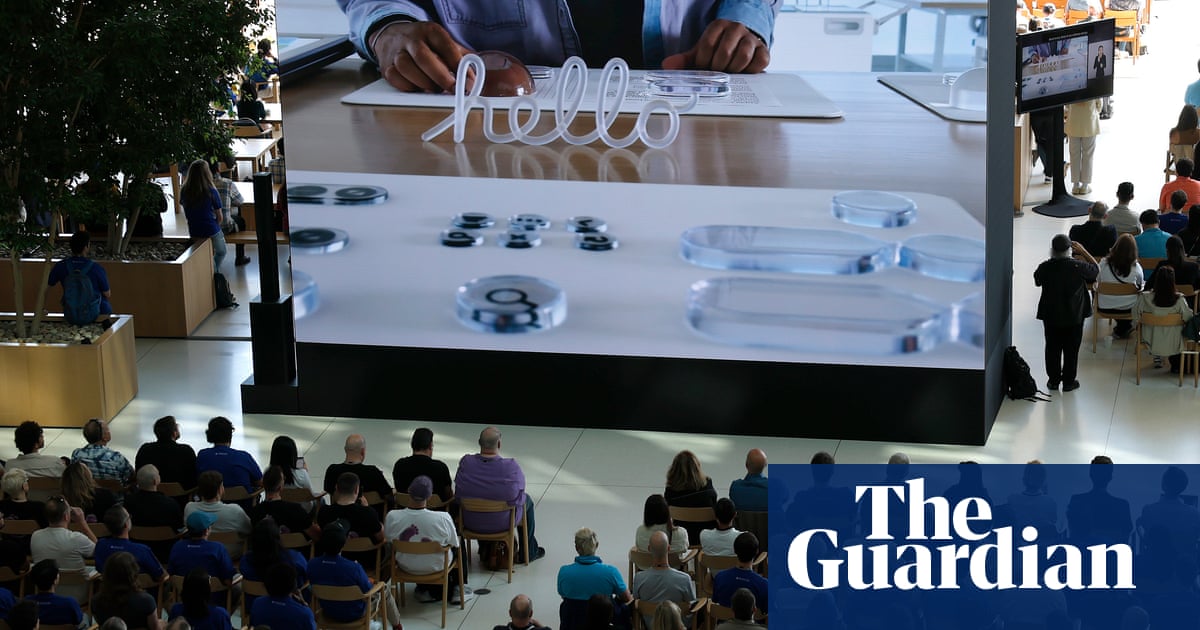Almost 100 people have died and 4,000 have been harmed after equipment malfunctions in the NHS in the past three years, prompting calls for more government funding to upgrade broken and obsolete medical devices.
A defibrillator advising paramedics not to administer a shock, an emergency alarm system on a neonatal ward failing, and the camera on an intubation device going dark were just three failures after which patients died.
They are included in figures released for the first time by NHS England that show patients were harmed after 3,915 equipment malfunction incidents – with 87 being followed by a death – since 2022.
Paul Whiteing, the chief executive of Action against Medical Accidents, said: “These are shocking statistics. Behind these numbers are real people who are needlessly harmed, the impact of which will be life-changing and traumatic.
“The scale of the harm and loss of life that has resulted from basic equipment failures and malfunctions shows in stark relief the scale of the tragedy that has resulted from years of underfunding in the NHS.”
The Labour party has pledged to double the number of scanners in English hospitals over the course of the parliament, and the chancellor, Rachel Reeves, is expected to announce significant additional capital funding for the NHS in this week’s spending review.
The vast majority of incidents, which were logged by doctors and nurses when a device was broken, not fit for use or didn’t perform as expected, caused a low level of harm. That meant patients were unlikely to need further treatment beyond dressing changes or short courses of oral medicine.
There were 522 moderate harm incidents, in which a patient’s independence could be limited for up to six months. Meanwhile, on top of the 87 deaths, 68 patients were severely harmed – meaning they could have received permanent damage from the incident, or had a reduced life expectancy.
The most up-to-date numbers are likely to be even higher, as the new safety system has only been mandatory for NHS organisations since September 2023, and many incidents on the system currently are missing information on the harm caused.
A defibrillator malfunction was the most likely incident to be followed by a death – with 28 recorded. Problems with breathing equipment and tubing failing to perform as expected also led to 12 deaths and 12 patients being severely harmed. Defective beds, mattresses or side rails caused 40 moderate injuries, and at least one fatality when a palliative care patient slipped on to the floor and died.
Matthew Taylor, the chief executive of the NHS Confederation, said: “Modern, up-to-date equipment such as scanners, defibrillators and patient monitors are absolutely essential for hospitals to run safely and more productively. But due to more than a decade of being starved of capital investment, NHS staff have been left with no option but to extend the life of obsolete equipment, which, as this research shows, is putting patients at unnecessary risk and leading to tragic avoidable harm.
“While the additional investment the government has pledged has been a welcome start, without sufficient capital funding it will be hard for the NHS to maintain the standards patients rightly expect and to deliver the government’s ‘plan for change’ promise to cut waiting times.”
A separate Guardian analysis of hospital board papers detailed how patients around the country continue to be put at risk by faulty or out-of-date equipment.
Ashford and St Peter’s hospitals trust in Surrey recorded an “extreme” risk in April due to failure to maintain the physical environment and update equipment.
At Croydon health services NHS trust, board papers from March detailed how radiology CT scanning equipment breakdowns were severely affecting cancer diagnosis and treatment. An emergency intercom in the main operating theatres was also broken, with a business case being written for a replacement costing about £60,000.
Board papers from Barts health trust in London recorded a risk of cancellation or clinically significant delays to heart, lung, kidney and stem cell transplant due to ageing diagnostic equipment in March.
At Royal London and Mile End hospitals (also part of Barts), staff were left unable to use some brain scanning equipment – still running on Windows 7 – because doing so would be a cybersecurity risk. At Whipps Cross in London, staff reported delays in care and possible harm to babies due to the age and state of repair of the fleet of ventilators in the neonatal unit.
At least 10,000 diagnostic devices from just one of the NHS’s major suppliers were past their manufacturer recommended lifespan at the end of March 2024, and at least 4,000 were a decade old. This finding – obtained via a freedom of information request from a prototype of an NHS database due to be launched next year and independently verified by the Guardian – relates to just one of hundreds of manufacturers, meaning the true scale of the issue is likely to be larger.
Health service guidance has said trusts ought to have been working towards fully eliminating the backlog of diagnostic equipment over 10 years old by April this year.
The figures come after years of underinvestment in NHS infrastructure, with both buildings and equipment in urgent need of repairs. The repair bill faced by the health service to make its estate fit for purpose more than trebled from £4.5bn in 2012-13 to £13.8bn in 2023-24. At least £2.7bn of those repairs are classed as “high-risk” because they pose a danger to people.
Last autumn, the new Labour government increased the NHS capital budget by £3.1bn overall, for this year and next. The NHS Confederation has called for the chancellor to commit to at least an extra £3.3bn of capital funding each year at next week’s spending review, as well as greenlighting a new and improved model of private investment into the health service which “learns the lessons” from PFI (the private finance initiative).
An NHS spokesperson said it had recently introduced a safety framework and was increasing investment in replacement machines, having invested more than £245m since 2020 in new diagnostic equipment. They said: “NHS staff work extremely hard to keep patients safe, but we know there is more to do to provide the best possible care.”
A Department of Health and Social Care spokesperson said: “Patient safety is paramount, and we are taking urgent action to repair and rebuild our hospital estate.
“The NHS buildings and equipment we inherited were left to crumble following years of damage and neglect, but we are determined to turn this around through our plan for change.
“We will increase capital spending by £1.8bn to £13.6bn in the next year, representing the highest real-terms capital budget for the department since before 2010, excluding the pandemic.”

 4 hours ago
2
4 hours ago
2

















































